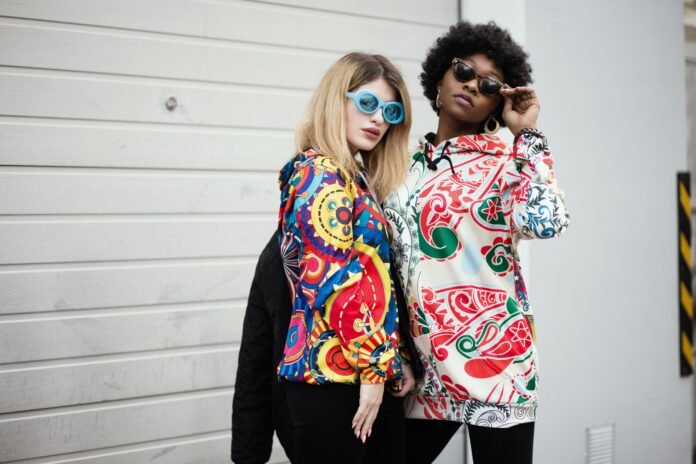Clothing has the power to say a lot about us as individuals. Political agendas, personal tastes, and public opinions are all woven into the fabric of what we choose to wear. But what happens when fashion expresses a political message? It can be at odds with tradition or result in revolutionary change. Fashion politics blend together clothing and identity to create a powerful statement about what people think and who they are. This article will explore the impact of fashion politics on identity and expression.
1. A New Revolution: Exploring Fashion Politics
The world of fashion is one permeated in politics and social change. Regardless of the era, fashion has been used both as a sign of rebellion and conformity. From the bright colours and bell-bottoms of the late 60’s and 70’s to the muted colours and androgynous silhouettes of the 90’s, fashion movements have been a consistent force of release and revolution. In the modern day, fashion has found new ways to explore old politics.
- Eco-Fashion: Eco-Fashion is a growing movement in modern fashion that looks to use sustainable and eco-friendly materials in their garments. This movement recognizes fashion’s large global ecological footprint and works to make clothing more consciously. From organic cotton to recycled fabrics, eco-fashion companies strive to create garments with the environment in mind.
- Vegan Fashion: Vegan fashion has also been gaining traction in the fashion world, exploring the moral and ethical considerations of knowingly using animal-sourced products. Brands like Brave GentleMan are utilizing non-animal sourced textiles to create cruelty-free fashion.
- Plus-Size Clothing: While plus-size clothing is not necessarily a new concept, it has become a focal political topic in the realm of fashion. Companies like Universal Standard are challenging traditional fashion norms to push for more inclusivity in the fashion world.
Fashion political movements can also look to religious and cultural contexts. Headcoverings, hijabs, and traditional pieces are becoming a more common sight on the larger fashion stage, representing different communities and their individual power. What’s more, fashion houses like Chloé have been vocal about their political statements, such as their decision to create a special line of hijabs.
Politics and fashion have long been intertwined, and the recent surge of fashion activism is bringing that connection back into the forefront. Whether you’re buying sustainable clothing, following the latest plus-size model on the runway, or even scrolling through hijabi influencers, the world of fashion is continuing to evolve and revolutionize the ways we view and engage with political issues.
2. How Clothes Shape Identity and Comfort
Clothing has long been used as a visual representation of identity, either cultural, religious, or career related. Clothing is not only a form of self-expression, but it also provides protection, warmth, and comfort. It can be used to portray certain messages of protection, belonging, and status.
The Impact of Clothing on Identity
It is often said that the first thing people notice about someone is their clothes. It is a representation of how one might like to be depicted in society. Clothes worn are often associated with cultural norms, such as traditional or religious attire or symbols. They are also used to express one’s personal style, beliefs, and affiliations with different groups. Clothing can become a signifier of one’s identity and the way they are commonly perceived by others. It can also serve as a form of protection or security, providing a sense of safety and strength.
The Impact of Clothing on Comfort
Clothing can also serve as a means of comfort. Wearing the right outfit can give a person a sense of belonging and confidence. Whether it be a power suit that exudes authority or a snug pair of jeans for comfortability, clothes can create an atmosphere for relaxation, comfort, and security. This is important for individuals of all ages, from infants to adults.
In addition to comfort, clothing also provides protection from environmental elements like the sun, air, and rain. Whether it’s a raincoat, a sweatshirt, or a nice lightweight scarf, clothing can be used to keep us warm, cool, or dry. It is a great way to prevent harm from extreme temperatures or hazardous elements.
Conclusion
Clothing can be a source of self-expression, identity, comfort, and protection. It is important to select clothing that is right for a particular occasion, climate, and of course personal style. Clothes shape identity and comfort, no matter what kind of clothing an individual chooses to wear. Whether it’s an extravagant dress or a comfortable hoodie, clothing can often reveal our individual style and values.
3. Investigating the Social and Political Influence of the Fashion Industry
The fashion industry has evolved over the years to become one of the most influential industries in the world. With the power of social media and the ever-changing consumer trends, it has a large impact on the social and political landscape of countries across the globe. Here are three ways the fashion industry is having an effect:
- Organizational Change: The fashion industry is constantly evolving to adapt to new consumer trends, meaning workplaces are becoming localised rather than internationalised. This has had a huge cultural and economic impact, with communities across the world benefitting from jobs in the fashion sector.
- Consumer Rights: The fashion industry is also influencing consumer rights around the world. For example, the Shift-Sustainability organisation is championing for locked-in wages and improved working conditions for garment-workers, reducing the exploitation of those in developing countries.
- Power of Popularity: We can’t deny that fashion has a certain power within political spheres too. Events, such as Paris Fashion Week, are attended by world leaders, who often use the fashion industry as a way to impact conversations around topics such as climate change.
It’s becoming increasingly obvious that the fashion industry has a significant role to play when it comes to political and social affairs. It’s entering into the discussions on topics from power dynamics to environmental issues and creating an impressive sense of awareness.
The awareness of consumer rights is growing and new organisations are being created to help those who work within ethical fashion. For example, the Shift-Sustainability organisation is creating a platform which encourages companies and consumers to work together to create positive change within the industry.
Now more than ever, the fashion industry is playing an integral role in changing the social and political conversations of our day-to-day lives. It’s having an impact on the economy, the environment and even the way we think about ourselves.
The fashion industry is showing us that it’s possible to make a difference – no matter how big or small – and that the power of fashion should not be underestimated.
4. Expressing Emotions Through Clothing Choices
We all have different ways of expressing ourselves, more so when it comes to our clothing choices. Our outfits do not only serve the practical needs of protection and keeping us warm, but a chance to express ourselves in a unique way.
Bright Colors. Bright colors are a great way to express your happiness and bring energy to your look. Whether it be a knitted scarf, or statement tee, wearing something eye-catching can help spread some positivity and reflect your happiness.
Deep Tones. Every wardrobe has a few black and grey staples, and that’s ok, as these two colors can have a calming effect and help you express sadness or grief. Wearing darker colors can be your way of honoring your feelings, and also create a comforting environment around you.
Casual or Formal. Choosing between a casual and a formal outfit is often a way to express how serious you want to take a particular situation. Going for a slack and a blazer feel more formal and professional, and can give you the extra confidence you need to take on a difficult day or meeting. On the other hand, if you’re just hanging with friends or running everyday errands, a casual look can be the right choice.
Prints & Patterns. Our clothing choices are often a reflection of our personality and culture. If you’re playing with prints and patterns, you are likely telling a story about who you are. From bright florals to abstract designs, you can express your love for the local culture, or your connection to certain art movements.
- Animal Print: expressing your wild side
- Floral: embracing femininity and softness
- Neon Colored: feeling bold and adventurous
- Checkered: representing order and structure
No matter what kind of clothing choices you make, your wardrobe can help you express your emotions in a variety of ways. So have some fun, and find your best way of wearing your feelings!
5. The Evolving Impact of Fashion On Society
Fashion has always been an integral part of modern society, expressing feelings and attitudes, and reflecting the evolution of culture. The impact of fashion on society is evolving over time, whether it’s the way individuals dress, the use of certain fabrics, or the influence of different cultural trends.
In recent years, fashion has taken on a more eco-friendly and sustainable mentality which has spread to most fashion-forward communities. For example, sustainable materials such as cotton and organic wool have become much more popular as a way to produce fewer clothing items with less environmental impact. Similarly, more and more fast-fashion companies that produce clothing quickly and cheaply are introducing sustainable production practices to reduce waste. This is increasingly important for protecting the environment and helping to preserve natural resources.
In addition to the effect of sustainable materials, fashion also has a strong social impact. Certain fashion trends can both highlight social movements and make statements about the current state of society. We have seen this in 2020 with messages of equality, resistance to oppression, and support expressed through fashion. The Black Lives Matter movement inspired fashion trends such as colorful protest signs, safety pins, and raised fists – all of which have made a powerful statement about the importance of speaking up and taking action.
Fashion is also a means of self-expression and can be used to explore individual identity. With the ever-changing landscape of fashion trends, it has become easier than ever for people to express their personalities in subtle or bold ways. From the use of colors and patterns in clothing, to an individual’s statement pieces, fashion is being used more and more as a way to promote self-expression.
It is clear that the impact of fashion on society is continuously evolving, and as it continues to do so, it is also becoming more diverse and inclusive. From its environmental, social, and personal impacts, the power of fashion cannot be understated.
Fashion is a form of self-expression, a reflection of identity, and an avenue of politics. From daily outfits to runway collections, we are surrounded by clothing that can have its own impact on our lives and the lives of those around us. Through fashion, we can explore the realities and complexities of human identity. We can use our wardrobe to share powerful messages about ourselves, our beliefs, and our communities. Together, we can make fashion a source for positive change.




